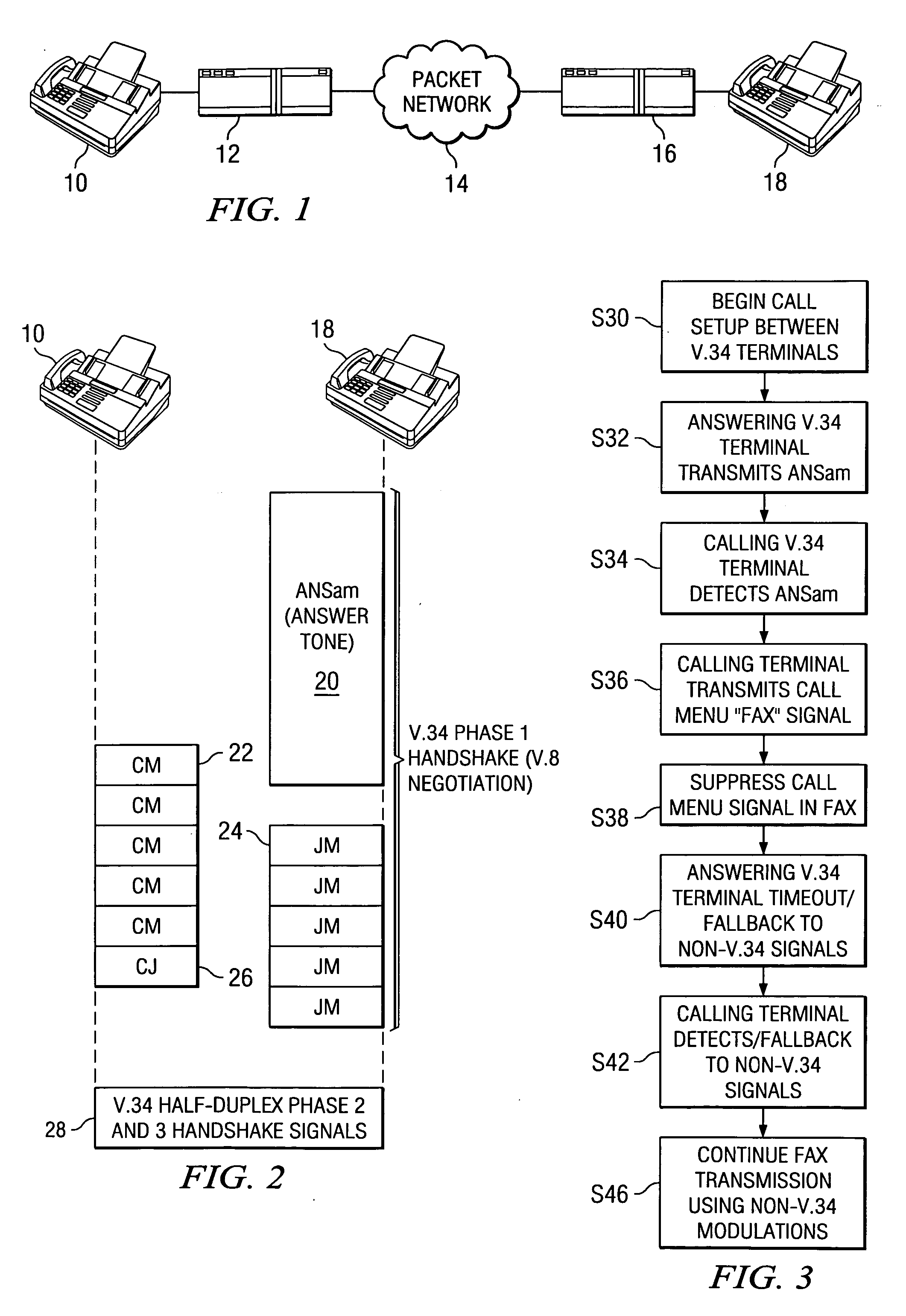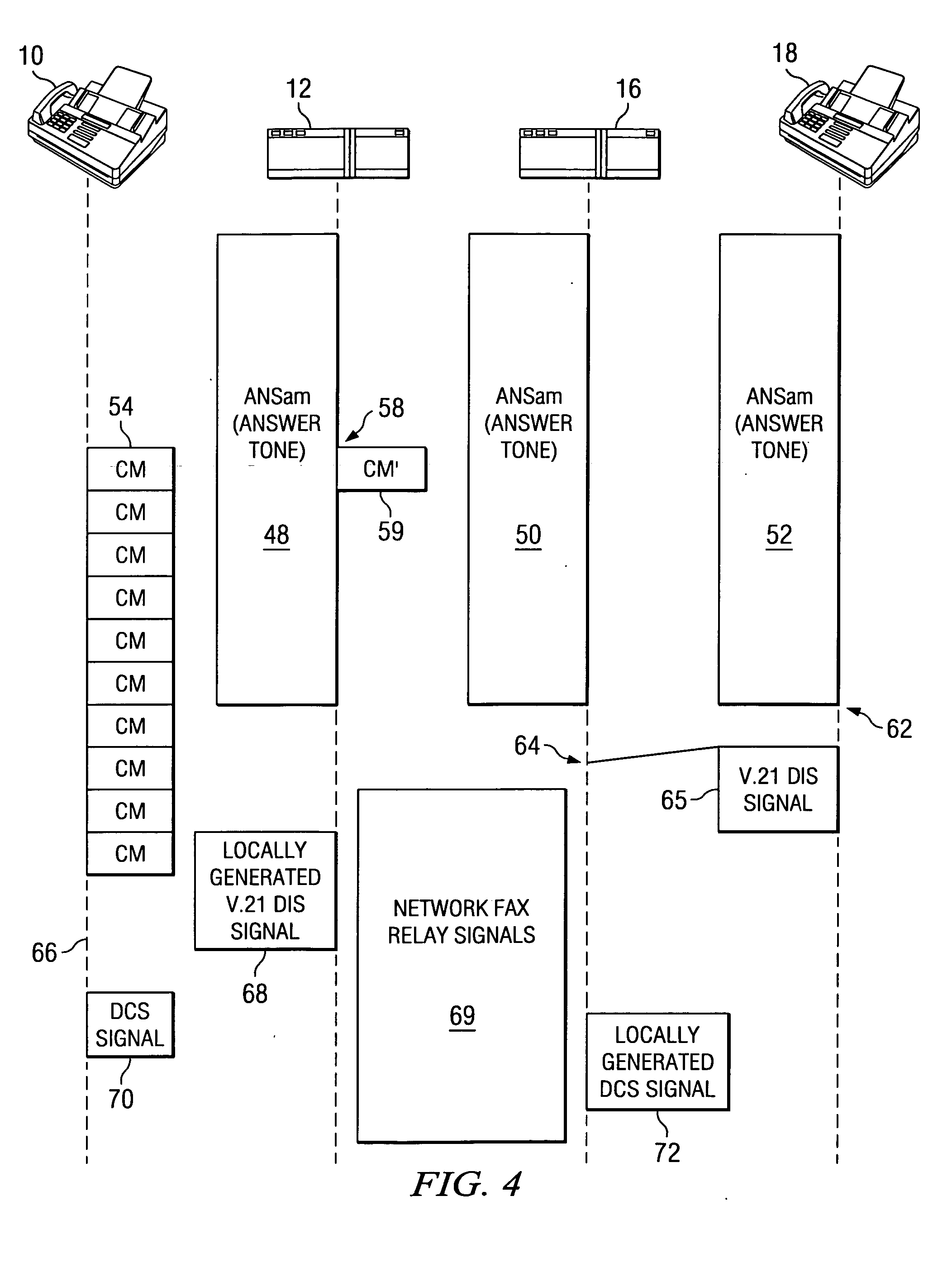Forcing V.34 fax terminals to fallback to legacy G3 modulations over voice over intrnet protocol networks
a voice over intrnet protocol and fax terminal technology, applied in data switching networks, multiplex communication, digital transmission, etc., can solve the problems of high implementation cost, high bandwidth utilization of vbd modes of operation, and inability to implement v.34 fax relay capabilities, etc., to achieve effective alternative solutions, reduce modulation, and exploit the bandwidth efficiency and robustness of fax relay techniques
- Summary
- Abstract
- Description
- Claims
- Application Information
AI Technical Summary
Benefits of technology
Problems solved by technology
Method used
Image
Examples
Embodiment Construction
[0017] The preferred embodiment of the present invention is a technique for gracefully forcing two V.34 fax devices to use legacy modulations (e,g., V.21, V.27ter, V.29, V.17) when communicating over a VoIP (voice over Internet Protocol) network. FIG. 1 illustrates the standard fax relay topology on an IP (Internet Protocol) network. Facsimile device 10 sends and receives faxes to far-end facsimile device 18 through Packet Network 14. Packet network 14 may include any broadband network. Voice over packet / fax over packet (VoP / FoP) Gateway 12 is connected to packet network 14. Gateway 12 connects to the packet network with a high speed Internet connection such as a digital subscriber line (DSL), cable modem, or T1 / T5 line. Gateway 12 uses a codec to convert analog fax data from fax device 10 into digital format, using protocols such as pulse code modulation (PCM) or ITU T.38 “Procedures for real-time Group 3 facsimile communication over IP networks”, which is incorporated herein. Pack...
PUM
 Login to View More
Login to View More Abstract
Description
Claims
Application Information
 Login to View More
Login to View More - R&D
- Intellectual Property
- Life Sciences
- Materials
- Tech Scout
- Unparalleled Data Quality
- Higher Quality Content
- 60% Fewer Hallucinations
Browse by: Latest US Patents, China's latest patents, Technical Efficacy Thesaurus, Application Domain, Technology Topic, Popular Technical Reports.
© 2025 PatSnap. All rights reserved.Legal|Privacy policy|Modern Slavery Act Transparency Statement|Sitemap|About US| Contact US: help@patsnap.com



